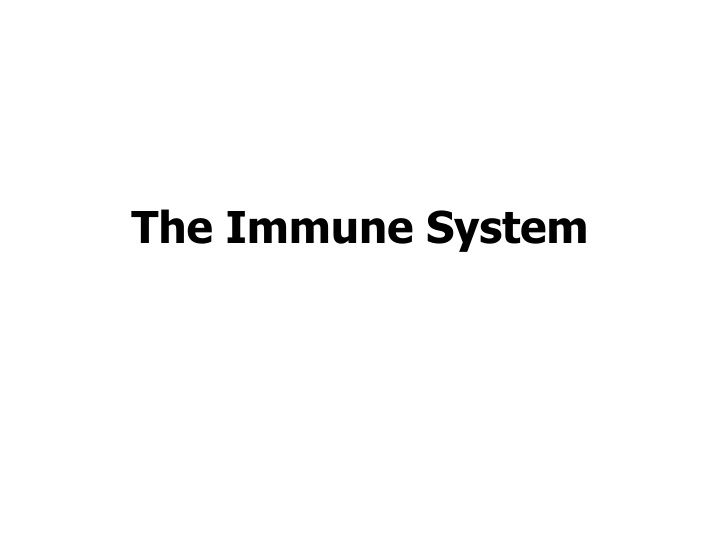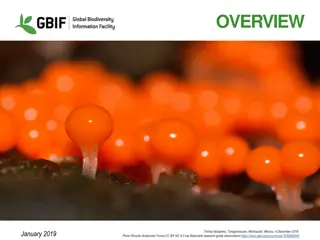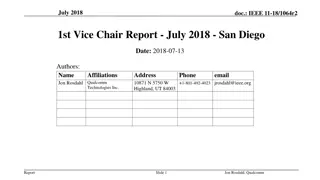
The Immune System and its Components
The immune system is vital for protecting the body from various threats, and specialists known as immunologists work to diagnose and treat immune system disorders. Key components include phagocytes, lymphocytes, NK cells, T cells, B cells, the lymphatic system, lymph vessels, and the thymus gland. Learn about the functions and roles of each component in maintaining a healthy immune response.
Download Presentation

Please find below an Image/Link to download the presentation.
The content on the website is provided AS IS for your information and personal use only. It may not be sold, licensed, or shared on other websites without obtaining consent from the author. If you encounter any issues during the download, it is possible that the publisher has removed the file from their server.
You are allowed to download the files provided on this website for personal or commercial use, subject to the condition that they are used lawfully. All files are the property of their respective owners.
The content on the website is provided AS IS for your information and personal use only. It may not be sold, licensed, or shared on other websites without obtaining consent from the author.
E N D
Presentation Transcript
The immune system enables the human body to remove many kinds of assaults. The specialists who diagnose and treat immune system disorders are called immunologists, and the specialty itself is called immunology.
Phagocytes Phagocytes are often the first immune system cells when injury occurs. They prevent infection by cleaning away pathogens. Two types of phagocytes are microphages and macrophages. Microphages, which constantly circulate in the bloodstream, are more plentiful than macrophages but are short- lived. Macrophages live longer than microphages, and they reside in critical areas, such as the pleural and abdominal cavities, as first-response defenders.
Lymphocytes When leukocytes (white blood cells) in the bloodstream are needed to fight infection, they leave the blood and enter the lymphatic system; they are then called lymphocytes. They include three different types: NK cells, T cells, and B cells.
NK Cells NK (natural killer) cells travel throughout the body. Natural killer cells can combat viral infection and malignant cells.
T Cells They depend on the thymus for activation. B Cells B cells are derived from bone marrow.
The Lymphatic System The lymphatic system comprises the vessels through which lymphocytes travel Lymph Like blood plasma, lymph is a fluid that consists mostly of water. It also contains a low concentration of proteins in solution and lymphocytes.
Lymph Vessels Lymph vessels also called lymph ducts. The largest of the lymph vessels are the thoracic duct and the right lymphatic duct.
The Thymus The thymus gland, located behind the sternum, secretes hormones, known collectively as thymosin, which help T cells develop. The thymus is most active in children and gradually and continuously loses some of its function with maturation and further aging.
The Spleen The spleen, which contains phagocytes, removes damaged red blood cells
Lymph Nodes Lymph nodes are structures of variable size that contain macrophages that filter out disease- causing antigens.
Tonsils Any collection of lymph tissue can be called a tonsil. The palatine, pharyngeal, and lingual tonsils.
Term Defintion autoimmunity immune responses against person own healthy cells and tissues substance that induces sensitivity or an immune response in the form of antibodies a molecule generated in specific opposition to an antigen impairment of the immune system antigen antibody immunodeficiency
phagocytosis process of white blood cells clearing away pathogens toxin a poisonous substance






















